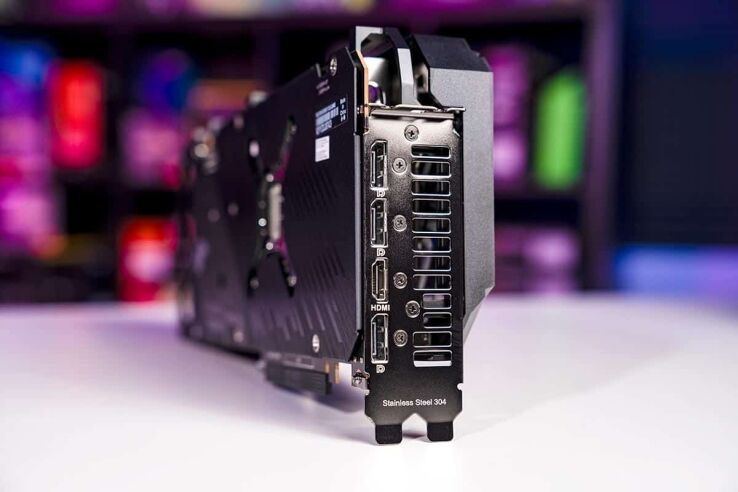Best GPU for Samsung Odyssey G9
This ultrawide gaming display deserves the best GPU to back it up

WePC is reader-supported. When you buy through links on our site, we may earn an affiliate commission. Prices subject to change. Learn more
Samsung Odyssey G9 specifications
It is a super ultrawide gaming display, the Samsung Odyssey G9. It has a huge 49-inch screen with a 32:9 aspect ratio and a resolution of 5120×1440, which is comparable to aligning two 27-inch 1440p displays side by side.
Additionally, it has a tough 1000R curved screen that forces the edges into your range of vision. With a quick 240Hz refresh rate, native FreeSync variable refresh rate (VRR) support, and G-SYNC compatibility to lessen screen tearing, it is perfect for gaming. It lacks Mini LED backlighting, unlike the Samsung Odyssey Neo G9 model that finally took its place, although it still has a VA panel with edge-lit local dimming.
The G9 is a dedicated gaming display with all the vital gaming specifications you’d expect from a top-tier model. It is Nvidia G-Sync compliant and has a refresh rate of up to 240 Hz and a response time of 1 ms.
You may still buy cards at MSRP at Best Buy and MicroCenter as well as via internet vendors. It’s challenging to even get yourself in a line for one, check out before someone else makes a purchase, or enter a store early enough to take one off the shelf.
Best GPU for Samsung Odyssey G9
We now recommend the RTX 3080 Ti and RX 6700 XT for this year. The G9’s only potential downside is that a strong GPU is required. The screen ran in HDR at full resolution at 240 Hz with no issues at all on the NVIDIA RTX 2080 Ti.
Gigabyte RTX 3080 Ti Gaming OC 12G
Core Clock Speed
1710 MHz Boost Clock
CUDA Cores
10,240
Memory Size
12GB GDDR6X
Dimensions
320 x 129 x 55mm
PSU Required
750W
TDP
360W
ASUS ROG Strix Radeon RX 6700 XT OC
Core Clock Speed
2622 MHz Boost Clock
Stream Processors
2560
Memory Size
12GB GDDR6X
Dimensions
322 x 141 x 56.5 mm (2.9 slot)
PSU Required
650W
TDP
230W
MSI GAMING GeForce RTX 2080 Ti
Clock Speed
1755 MHz
VRAM
11GB GDDR6
Memory Bus Width
352 bit
It has a gorgeously completed case that is approximately 1 m wide, a white glossy plastic back, and an integrated cable tidy. Along with the primary socket, the back of the device has two DisplayPort connectors, an HDMI port, and two USB 3.0 ports. On the left side of the case’s bottom edge, there is a power button. It can also be used to operate the onboard settings menu as a joystick.
Best GPU for Samsung Odyssey G9 FAQs
What is the best GPU for the Samsung Odyssey G9?
The G9 has a large resolution that your graphics card has to fill. And so you want something to be able to run that amount of pixels. So for the best GPU for the Samsung Odyssey G9 we recommend the RTX 3080 Ti. Which can manage a good performance at those higher resolutions across the board. While the RX 6700 XT and older RTX 2080 Ti are also good alternatives when you’re looking for a complete setup.